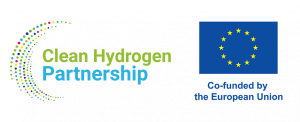Salzgitter, October 17, 2022 | Sunfire’s world’s largest high-temperature electrolyzer in Salzgitter is an important part for the Salzgitter Group’s sustainability plans. After four years, the partners of the hydrogen project GrInHy2.0 draw a positive conclusion.
With a record production of almost 100 tons of green hydrogen for the climate-neutral production of green steel, Salzgitter AG and the electrolysis manufacturer Sunfire successfully complete the EU-funded GrInHy2.0 (“Green Industrial Hydrogen”) project.
Green hydrogen is key to climate protection and the decarbonization of industries. Also in the steel industry, pioneers such as Salzgitter AG are introducing innovative technologies with SALCOS® – Salzgitter Low CO2 Steelmaking – to use the gas of the future for climate-neutral steel production. With GrInHy2.0, Salzgitter AG continued its successful cooperation with Sunfire to integrate novel electrolysis technologies for hydrogen production in an industrial environment.
Since 2019, the project partners have been operating a high-temperature electrolyzer from Sunfire with an electrical connected load of 720 kW on the premises of Salzgitter Flachstahl – the plant is considered the world’s largest and most efficient of its kind. Dr. Alexander Redenius from the Salzgitter Mannesmann Forschung underlines: “GrInHy2.0 is an important part of our SALCOS project for CO2-reduced steel production. Green hydrogen is essential for producing low-CO2 steel, as it reduces carbon emissions very efficiently. With GrInHy2.0, we have gained valuable insights into the integration of electrolysis into our production processes.”
The green hydrogen produced is fed directly into the hydrogen grid of Salzgitter Flachstahl – to date, almost 100 tons of the gas have been used in annealing processes and galvanizing plants for steel finishing. The partnership between Sunfire and Salzgitter AG is to continue beyond GrInHy2.0. “For the transformation of steel production towards hydrogen-based processes, the criteria of availability and cost-effectiveness are becoming increasingly important. Therefore, high-temperature electrolysis is a very interesting technology in the field of steel production, which we will continue to support intensively,” says Dr. Alexander Redenius.
Already at the beginning of the year, the Sunfire electrolyzer set new efficiency standards: For the first time, the project partners were able to demonstrate an electrical efficiency of 84 %el,LHV – this corresponds to an energy requirement of only 39.7 kWh/kgH2. In addition, the system produced up to 200 Nm3 (standard cubic meters) of green hydrogen per hour. No other operator has previously been able to demonstrate such high numbers.
The electrolyzer is based on the innovative SOEC technology (solid oxide electrolysis cell) and runs at operating temperatures of 850 °C. The system utilizes industrial waste heat and renewable electricity to split steam into its components hydrogen and oxygen.
“GrInHy2.0 is an important lighthouse project for Sunfire, in which we successfully demonstrated our SOEC technology on an industrial scale,” says Christian von Olshausen, Sunfire CTO. “At the same time, we have gained valuable insights for the further technical development. Projects like this lay the foundation for rapidly scaling electrolysis technologies worldwide.”
In addition to Salzgitter Flachstahl, Salzgitter Mannesmann Forschung and Sunfire, the SMS Group company Paul Wurth, Tenova and the French research institution CEA are also part of the project.
More information about GrInHy2.0 and SALCOS® can be found at www.green-industrial-hydrogen.com and salcos.salzgitter-ag.com
Image: © Salzgitter AG
This project has received funding from the Fuel Cells and Hydrogen 2 Joint Undertaking (now Clean Hydrogen Partnership) under Grant Agreement No 826350. This Joint Undertaking receives support from the European Union’s Horizon 2020 Research and Innovation programme, Hydrogen Europe and Hydrogen Europe Research.

Sunfire is a global leader in the production of industrial electrolyzers based on pressurized alkaline and solid oxide (SOEC) technologies. With its electrolysis solutions, Sunfire is addressing a key challenge of today’s energy system: Providing renewable hydrogen and syngas as climate-neutral substitutes for fossil energy. Sunfire’s innovative and proven electrolysis technology enables the transformation of carbon-intensive industries that are currently dependent on fossil-based oil, gas, or coal. The company employs more than 650 people located in Germany and Switzerland.
For more information visit www.sunfire.de